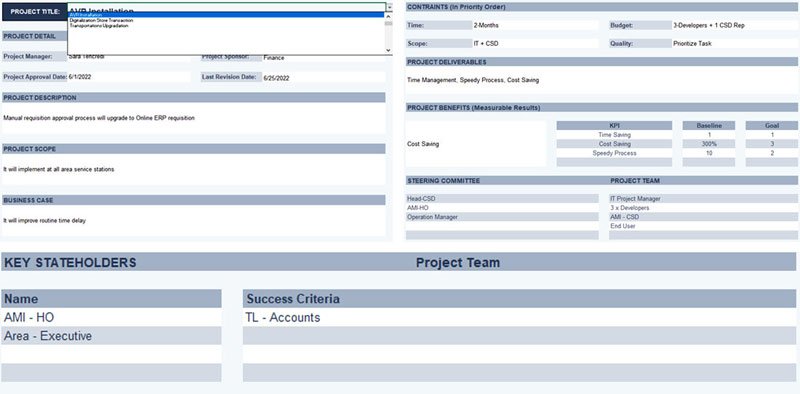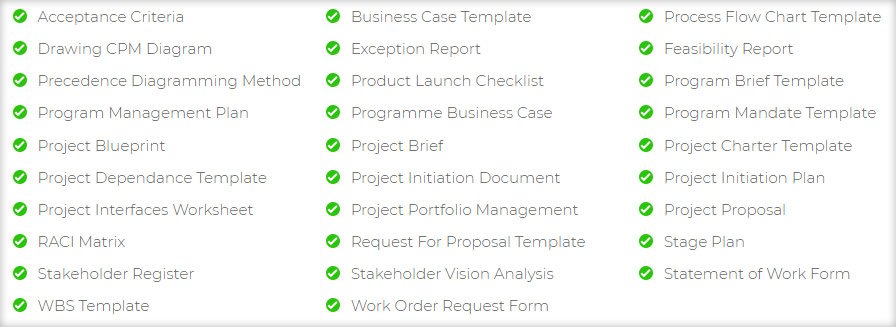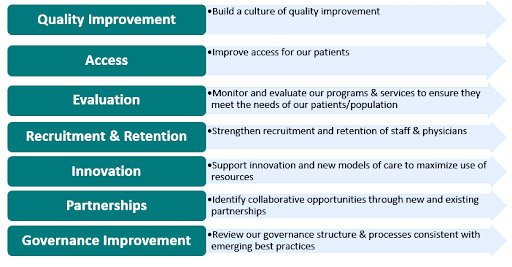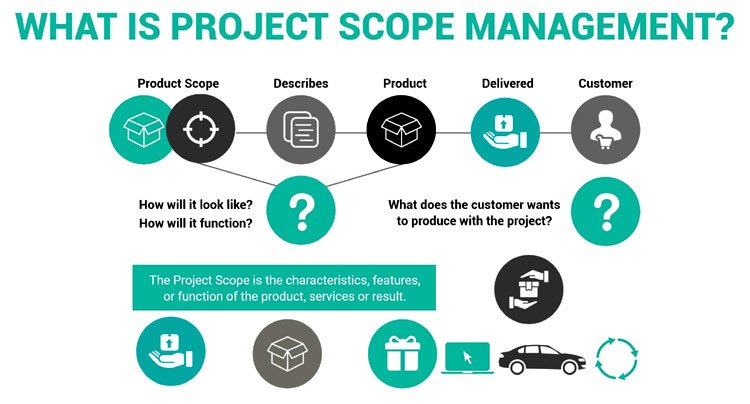Regardless of the size or complexity of the project, a ‘project management plan template‘ is an essential tool for completion. It is a thorough document that lists the project’s objectives, scope, timetable, budget, materials, hazards, and other important details.
Excel is a popular option despite the availability of several project management tools and software because of its adaptability, versatility, and familiarity.
Project managers may design unique project management plan templates using Excel’s user-friendly interface and modify them to meet the demands of their particular projects.
In this article, we’ll examine the essential elements of an Excel project management plan template and provide tips on how to construct a thorough and useful plan that will assist you in completing your projects on schedule, within budget, and to the satisfaction of all stakeholders.
What is Project Management Planning?
Planning is the act of identifying, organizing, and specifying the procedures required to accomplish a certain project objective.
It involves identifying the resources, timeframes, budgets, risks, and other factors necessary to complete a project successfully.
A project management plan acts as a road map for the whole project team, showing how to accomplish the goals of the project while handling any potential obstacles.
Effective project management planning involves several key steps, including defining the project scope and objectives, creating a work breakdown structure (WBS) to break the project down into manageable tasks, identifying and allocating resources, estimating timelines and budgets, managing risks, and developing a communication plan.
The project management plan is typically created during the project initiation phase and updated throughout the project’s lifecycle as new information becomes available.
The project management plan is an essential document that helps ensure the project’s success by providing clear guidelines for everyone involved.
It’s a live document, so the team should revisit it often to make sure they’re still on track and able to deal with any new developments or obstacles that may occur.
Best Template Use in Project Management Planning
Each of the templates you mentioned can be useful in different aspects of project management planning. Here is a brief description of each template and how they can be used in project management planning:
Project Status Report Template
There are the steps to create a Project Status Report:
- Define the report objectives and the audience it is intended for.
- Gather project data, including project progress, risks, issues, and budget status.
- Analyze the project data to identify any trends, issues, or areas of concern.
- Provide a format that is simple to read and comprehend for the project data.
- Review and revise the report as needed to address feedback or changes.
- Send the report to the necessary parties, including the project team, sponsors, and clients.
All project participants should be informed of the project’s status, risks, and difficulties by creating a project status report. It should be created regularly to ensure that everyone stays up to date on the project’s status.
Project Charter
There are the steps to create a Project Charter:
- Define the project’s purpose, goals, and objectives.
- Determine the project’s stakeholders, such as the team members, clients, and project sponsors.
- Define the project scope, including the project deliverables, timeline, and budget.
- Develop a project organization chart, including the roles and responsibilities of the project team members.
- Identify the project risks and create a risk management plan.
- Obtain approvals from the project stakeholders and finalize the project charter.


Everyone participating in the project will benefit from having a clear grasp of its purpose, objectives, and goals if a project charter is created. It also helps establish a framework for managing the project and ensuring its success. The Project Charter should be reviewed and updated as needed throughout the project.
Project Proposal
There are the steps to create a Project Proposal:
- Define the project problem or opportunity.
- Identify the project objectives, including the desired outcomes and benefits.
- Develop a project plan, including the project scope, timeline, budget, and resources required.
- Identify the project stakeholders and their roles and responsibilities.
- Describe the project approach and methodology to be used.
- Develop a risk management plan to address potential project risks.
- Obtain approvals from the project stakeholders and finalize the project proposal.

Ensure that all parties participating in a project have a shared knowledge of its purpose, intended outcomes, and proposed methodology is facilitated by developing a project proposal. It also helps prove the project’s viability and get funding. The Project Proposal should be reviewed and updated as needed throughout the project.
Quality Management Plan Template
There are the steps to create a Quality Management Plan:
- Define the project quality objectives, including the desired level of quality for the project deliverables.
- Identify the project quality standards to be used, including any industry-specific or regulatory requirements.
- Develop a quality assurance plan to ensure that the project meets the defined quality objectives.
- Develop a quality control plan to monitor and verify that the project deliverables meet the defined quality standards.
- Define the roles and responsibilities of the project team members related to quality management.
- Develop a quality improvement plan to address any quality issues or non-conformances that may arise during the project.
- Obtain approvals from the project stakeholders and finalize the Quality Management Plan.

Creating a Quality Management Plan helps ensure that the project deliverables meet the desired level of quality and that the project meets any industry-specific or regulatory requirements. It also establishes a framework for managing quality throughout the project lifecycle. The Quality Management Plan should be reviewed and updated throughout the project.
Stakeholder Management Planning
There are the steps to create a Stakeholder Management Plan:
- Identify the project stakeholders, including internal and external stakeholders.
- Analyze the stakeholders’ interests, expectations, and level of influence on the project.
- Develop a stakeholder communication plan to ensure effective communication with all stakeholders throughout the project.
- Create a strategy for engaging stakeholders in the project to get their involvement and support.
- Define the roles and responsibilities of the project team members related to stakeholder management.
- Create a strategy for collecting stakeholder input that will be used throughout the project.
- Obtain approvals from the project stakeholders and finalize the Stakeholder Management Plan.
A Stakeholder Management Plan may assist in guaranteeing that all stakeholders are involved and comprehending the goals and status of the project. It also establishes a framework for managing stakeholder expectations and addressing any concerns or issues that may arise. The Stakeholder Management Plan should be reviewed and updated throughout the project.
Risk Management Plan Template
There are the steps to create a Risk Management Plan:
- Identify potential project risks, including external and internal factors that may impact the project.
- Analyze the identified risks and assess their likelihood and potential impact on the project.
- Develop risk response strategies to address each identified risk, including risk mitigation, risk avoidance, risk acceptance, or risk transfer.
- Define the roles and responsibilities of the project team members related to risk management.
- Develop a risk monitoring and control plan to track identified risks and update risk response strategies as needed.
- To assess the success of the risk management plan and make any necessary improvements, establish a risk review process.
- Obtain approvals from the project stakeholders and finalize the Risk Management Plan.
Creating a Risk Management Plan helps identify potential project risks and establish a framework for addressing them. It also provides a process for monitoring and controlling risks throughout the project lifecycle. The Risk Management Plan should be reviewed and updated throughout the project.
Scope Management
There are the steps to manage the scope of a project:
- Define the project scope, including the objectives, deliverables, and project boundaries.
- Develop a Scope Management Plan that outlines the scope management approach, including the scope statement, scope baseline, and scope change management process.
- Obtain approvals from the project stakeholders for the Scope Management Plan.
- Monitor project activities to ensure they align with the defined scope.
- Control project changes by assessing and approving any proposed changes to the project scope.
- Verify project deliverables to ensure they meet the defined scope.
- Close out the project by confirming all deliverables have been completed and meet the defined scope.

Managing project scope helps ensure that the project stays on track and meets its objectives. It also helps prevent scope creep and ensures that changes to the project scope are properly evaluated and approved. The Scope Management Plan should be reviewed and updated throughout the project.
The Real Problem With Project Management Plan. What Do You Think?
I think ensuring your project management strategies work in the real world is a major task. Many plans are created with great detail and attention to every possible scenario, but they can become too cumbersome and difficult to follow. It may also be challenging to adjust and react quickly when unanticipated events happen that weren’t anticipated in the strategy.
Another issue is that plans can become outdated quickly if they are not regularly reviewed and updated. A plan that was created at the beginning of a project may no longer be relevant as the project progresses and circumstances change.
Lastly, it might be challenging for some project managers to come up with a workable approach given the constraints of time, money, and other resources. This may result in a strategy that is unduly idealistic or ambitious, dooming the undertaking to failure from the outset.
How Does Ezowo Help You to Create a Project Management Plan through Useful Templates?
There are the steps to create a project management plan using the templates provided by Ezowo:
- Visit the Ezowo and navigate to the project management plan templates section.
- Choose the suitable template for your project’s requirements, such as a stakeholder management plan, risk management plan, or project charter.
- Open the template after downloading it in Google Sheets or Microsoft Excel, depending on your preference.
- Modify the template to meet the demands of your particular project by adding or deleting parts or changing the text to correspond with your project objectives.
- Utilize the guidance and best practices provided by Ezowo to ensure that you are effectively utilizing the template and creating a comprehensive project management plan.
- Regularly update the project management plan as the project progresses, utilizing the template as a guide to ensure that all important aspects of the project are being tracked and managed effectively.
By following these steps and utilizing the templates provided by Ezowo, project managers can create effective project management plans that can help to ensure project success and achieve project goals more efficiently.
Conclusion
In conclusion, project management planning is a crucial aspect of successful project management. The usage of templates in project management planning may greatly simplify the procedure and guarantee that all important project components are monitored and handled successfully.
The templates provided by Ezowo offer a valuable resource for project managers looking to create comprehensive and effective project management plans. By utilizing these templates and following best practices in project management planning, project managers can increase the likelihood of project success and achieve project goals more efficiently.
With the help of Ezowo’s project management plan templates, project managers can save time and effort while creating effective project management plans that can help to ensure project success.
FAQs
What is a project management plan?
A project management plan is a detailed document that lists the goals, parameters, schedule, finances, and resources of a project.
What are the benefits of using project management templates?
Using project management templates can help save time and ensure consistency in project planning and documentation.
What is a project charter?
A project charter is a document that lists the goals, constraints, participants, and high-level schedule of a project.
What is a project proposal?
A project proposal is a written document that describes the objectives, parameters, budget, and anticipated results of a proposed project.
What is a project status report?
A project status report is a written summary of a project’s development, covering significant challenges, risks, and milestones.
How can Ezowo help with project management planning?
Ezowo offers a selection of project management templates that may be altered to fit the requirements of your project and speed up the preparation process.



